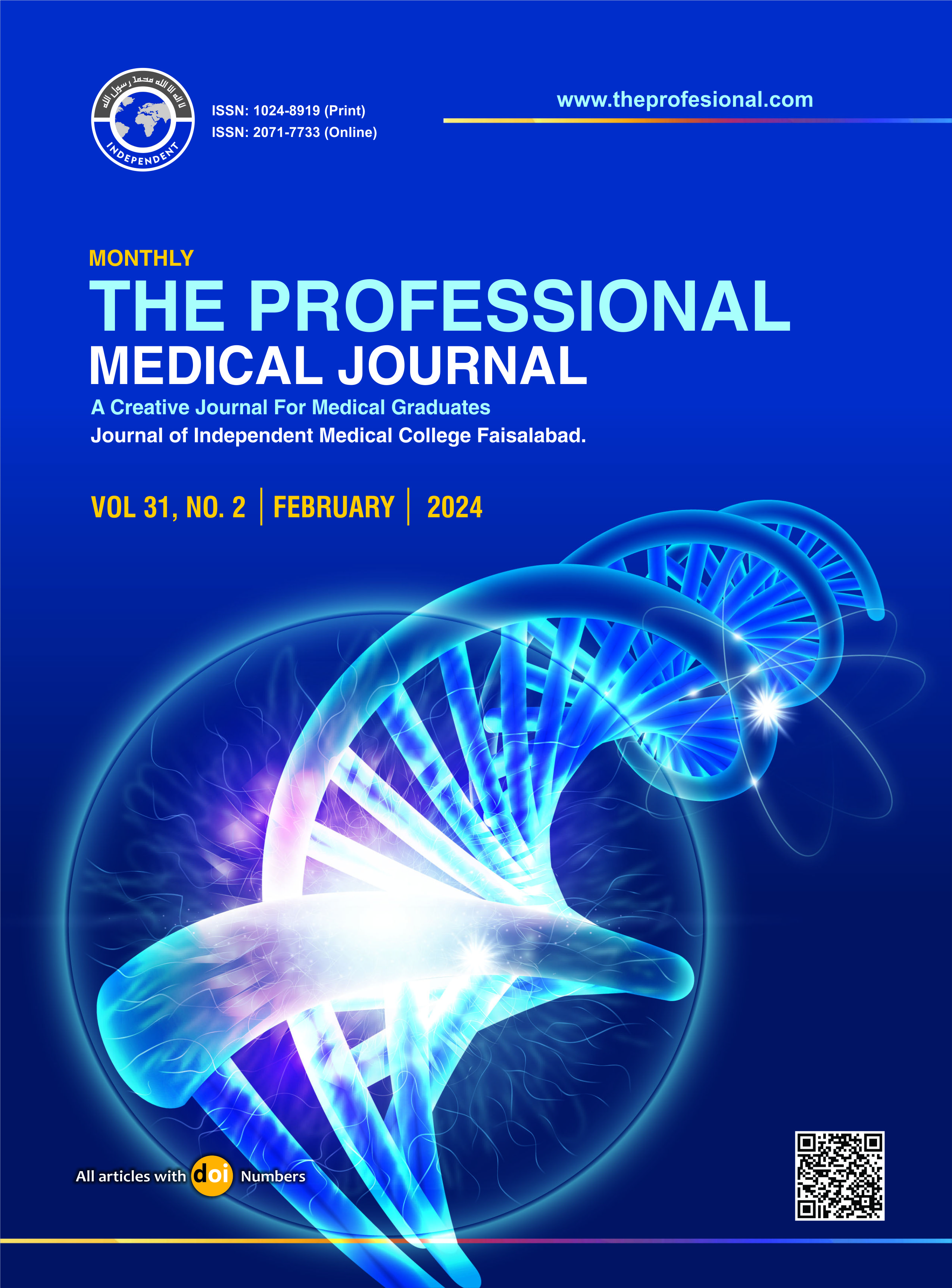Outcome of vesicovaginal fistula repair by vaginal approach.
DOI:
https://doi.org/10.29309/TPMJ/2024.31.02.7924Keywords:
Success Rate, Vesicovaginal Fistula, Vaginal ApproachAbstract
Objectives: To evaluate success of vesicovaginal fistula repair by vaginal approach with secondary objective to assess the limitations of repair by vaginal route. Study Design: Retrospective & Descriptive study. Setting: Department of Urology and Renal Transplantation, Faisalabad Medical University, Faisalabad. Period: January 2017 to December 2020. Material & Methods: In which 42 patients were included in the study. All patients were submitted for VVF repair by vaginal approach. Procedure was done under spinal anesthesia in all patients. Operation was done in lithotomy position. Circumferential incision was made around the fistula. Vagina and bladder were separated. Urinary bladder was repaired in two layers and vagina by perpendicular stitching technique. Foley catheter was passed. Urinary leakage was seen by instillation of normal saline and Gentian Violet. Vaginal packing was done at the end of the procedure which was removed after 1 day of surgery and patient post operative data was noted. Results: 42 patients were included. There mean age was 27 years. 45.23% patients came with history of prolonged labor, 30.95% patients presented after transabdominal hysterectomy, 21.42% after lower segment secession section and 2.38% patients came after operation for cystocele. Infra-trigonal VVF was present in 59.53% patients and supra-trigonal in 40.47% cases. Our success rate was 85.71% and we faced failure in 14.28% of patients. Lower urinary tracts symptoms were seen in 30.95%, hematuria in 9.25%, stress incontinence in 11.9%, symptoms like over active bladder in 7.14% and urinary tract infection in 14.28%. Conclusion: VVF repair by vaginal approach is safe and successful with less morbidity than abdominal approach.
Downloads
Published
Issue
Section
License
Copyright (c) 2024 The Professional Medical Journal

This work is licensed under a Creative Commons Attribution-NonCommercial 4.0 International License.


